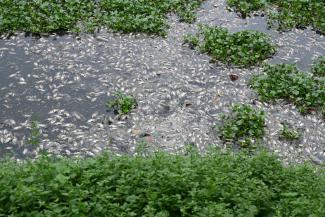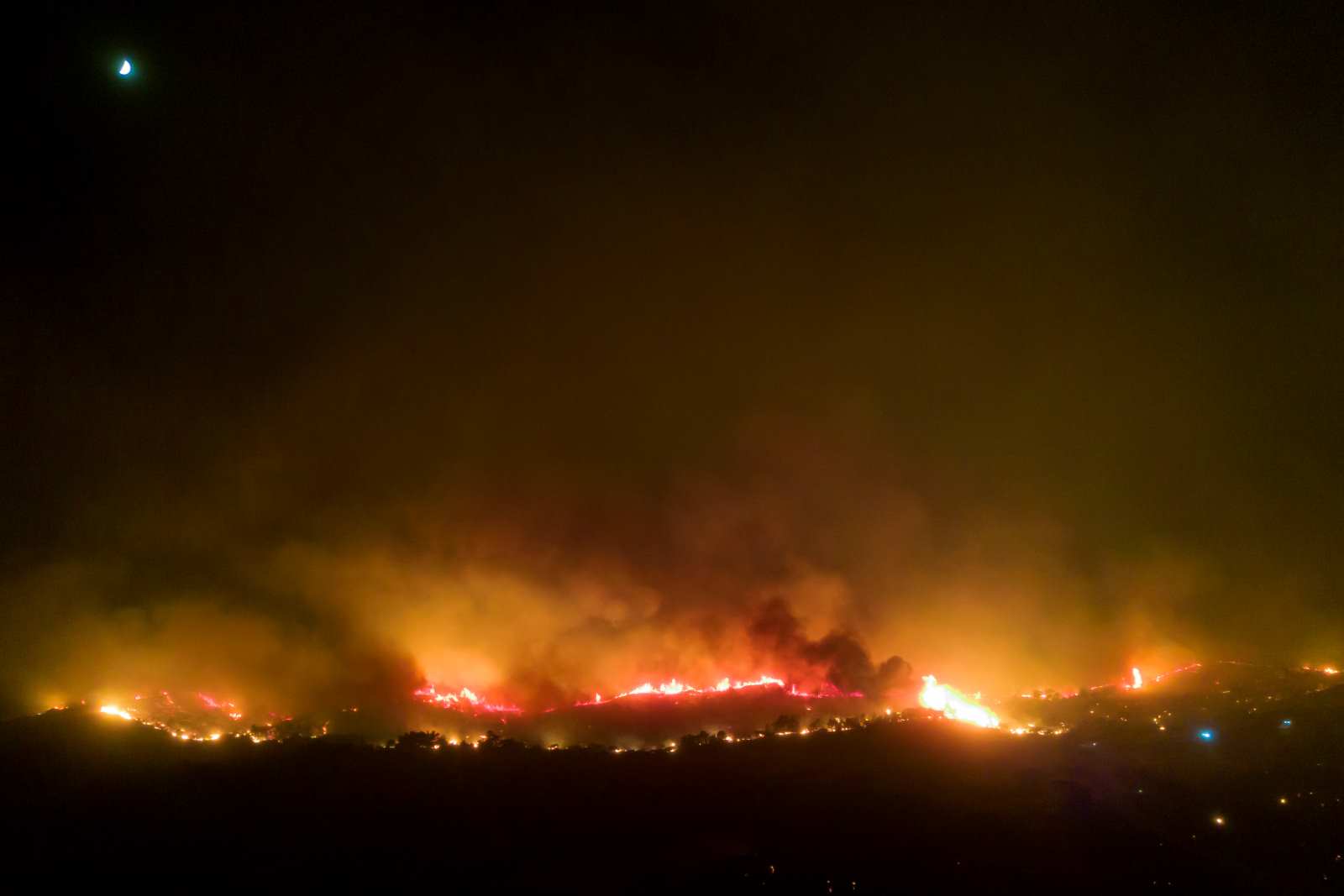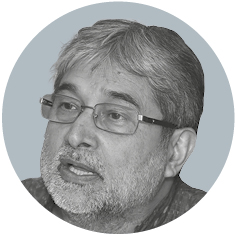Global biodiversity
The basis of our existence

Why are wild species and biodiversity so important?
They are the basis of our existence on this planet. Biodiversity is the cornerstone of ecosystems, and ecosystems are the reason we have food, clothing and air to breathe. It is also the foundation of our economic system. We depend on natural resources for everything.
What tangible effects will the progressive loss of biodiversity have for people’s livelihoods and food security?
If there are no more fish in the sea, then there are no more fish for people to eat. We need healthy soils for a healthy diet, we need plants for clean air. Without biodiversity we cannot survive.
Many indigenous peoples have an incredibly close connection to nature. Industrialised countries tend to overemphasise profit. So, this connection is lost, and with it our health and not least part of our culture.
What perspective do you have on the conflicts between human rights and biodiversity, for example regarding the displacement of indigenous people?
80 % of the planet’s remaining biodiversity is located in indigenous peoples’ lands. And more than 90 % of these lands are in good or fair ecological condition. At least 36 % of the indigenous territories are located in areas considered key regions for biodiversity. This shows that indigenous communities play a central role here.
In the past, many conservation actions displaced people. This was a very colonialist attitude and led to a disconnection between indigenous peoples and their land. The indigenous people knew how to manage their land sustainably before the colonisers came. So, there should be no conflict or human-rights issue at all.
Human rights should actually be the foundation for the conservation of biodiversity. Indigenous peoples are the best custodians of biodiversity. We must move towards a more inclusive path of conservation for a sustainable management of biodiversity.
Are all species of equal relevance to the survival of our planet and how do we know which species are most important?
I hope we never get into a situation where we have to make these kinds of decisions. Biodiversity is all part of an interconnected system. Every species has a job to do. It is like an engine. If you take one component out, it still runs – just not very well. Take out many components and the whole system breaks down. It is not just rhinos and elephants that need to be protected – the small species are absolutely critical too. We must never give preference to one species over another. We must see the system as a whole, and we need all the components for it to work properly.
Examples such as the bee population decline are quite well known to the public. Are there other important but lesser-known species that are threatened with extinction?
According to the Red List of the International Union for Conservation of Nature (IUCN), more than 42,000 species are currently threatened with extinction. Not all of them play as obvious a role as bees. But as I said, it is a system that needs all species to continue operating.
What role does marine biodiversity play?
The ocean covers two thirds of our planet. It plays a crucial role in climate regulation because it absorbs carbon, for example. Species such as mangroves, which are also nurseries for fish, are important too. The ocean provides a significant source of protein for millions of people. Without the ocean, we would be in a worse state than we already are.
What should a sensible blue economy look like?
The key is sustainability: No more should be taken than is sustainable. At the same time, human wellbeing and the economy must also be considered. We need protected marine areas, and we need to ensure the rights of coastal communities. Monitoring and research can help here to assess fish stocks and set sustainable fishing quotas.
We know that high-tech agriculture threatens biodiversity too. What does a biodiversity-friendly agricultural approach need to look like?
In 2021, the UN held the international Food Systems Summit. One of the main recommendations of this summit was nature-friendly production. This means working with nature instead of against it. With large-scale industrial monocultures, you eventually get into a situation where the soil can no longer regenerate, and you constantly have to use artificial fertilisers.
This means that a biodiversity-friendly agricultural approach must work with agroecological principles such as environmentally friendly fertilisers, intercropping or mixed cropping and leaving some land for soil regeneration. The use of indigenous tree species plays a role as well. This can be done on both large and small scales.
But it is also about changing the way we consume. We need to think about a diversified diet that does not rely only on highly processed foods from monocultures.
Such approaches sometimes conflict with the goals of economic or infrastructure development, especially as many biodiversity hotspots are in countries with lower or middle income. How can this be reconciled better than in the past? How can poverty and hunger be tackled without endangering biodiversity?
The answer is twofold. It is about changing global consumption patterns and finding ways to live with and benefit from nature without overexploiting it.
The reason many biodiversity hotspots are located in low- and middle-income countries is that these areas have not been overexploited yet. High-income countries have already destroyed a significant component of their own biodiversity. Developing countries should be applauded for preserving their biodiversity hotspots and supported to sustain them.
One problem, however, is that much of what is being produced in developing countries is actually meant for consumption in richer nations. There is a lot of land that is appropriated for growing food for export. The space for production for local consumption is shrinking.
We need to change the way we produce and consume globally. Rich countries need to reduce their consumption and we need more agroecological measures in all countries that allow livestock, agriculture and biodiversity to co-exist.
Community-based conservation, as evidenced in many developing countries, is one of the most successful ways of living with nature. There are different approaches to this. In Kenya, for example, community members voluntarily leave a certain area and farm elsewhere to enable wildlife to thrive. In Namibia, some communities continue to farm and raise livestock on their land and keep certain zones reserved for wildlife. All these communities generate high incomes from tourism or carbon credits, which allow them to live on their land without transforming it for extensive agriculture.
What further steps need to be taken to protect biodiversity and what is UNEP’s role in it?
Our work is all about science and policy, analysing data and bringing it together. One of our flagship publications is the Global Environment Outlook (GEO). We try our best to help member states make informed decisions and comply with agreements like the Convention on Biological Diversity (CBD).
We are also working with countries to find out how they can best achieve the goals of the Kunming-Montreal Global Biodiversity Framework as an outcome of the UN Conference on Biodiversity (COP15) 2022 by supporting them to develop their national biodiversity strategies.
However, there are many different levels. UNEP has a very specific niche where it supports governments and gives a voice to the environment. But indigenous peoples and local communities also play a big role for UNEP, as do non-governmental organisations and the private sector. It’s a holistic system that we are engaging with, from individuals to companies to governments.
How do you assess the progress made after the UN Summit in Rio thirty years ago, especially with regard to the CBD?
That was an important milestone. Unfortunately, the CBD targets have not been met in the meantime. But there is certainly public will to do the right thing. And the Kunming-Montreal Global Biodiversity Framework offers a great new opportunity to finally achieve strong biodiversity targets and outcomes for the benefit of society as a whole.
What relevance do you assign to this framework and COP15?
For me, COP15 was a rollercoaster of emotions. At the beginning it was devastating to see people not moving forward and not compromising. Honestly, I was afraid we would not go anywhere.
But what has emerged is remarkable. The central role of indigenous peoples and local communities as well as women has been recognised. It is a very inclusive agreement. And for me the key to sustainable biodiversity conservation is inclusiveness. It cannot be done by a small group of people. It has to be done by everyone. And that gave me hope – the recognition that it needs to be a whole-of-society approach.
Link
The Global Environment Outlook
https://www.unep.org/geo/
Melissa de Kock is the Head of the Biodiversity, People and Landscapes Unit at the United Nations Environment Programme (UNEP).
unep-newsdesk@un.org













